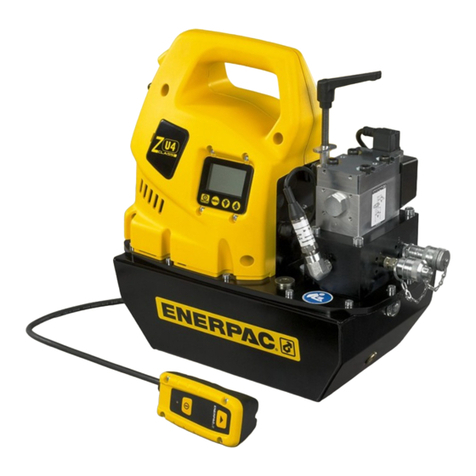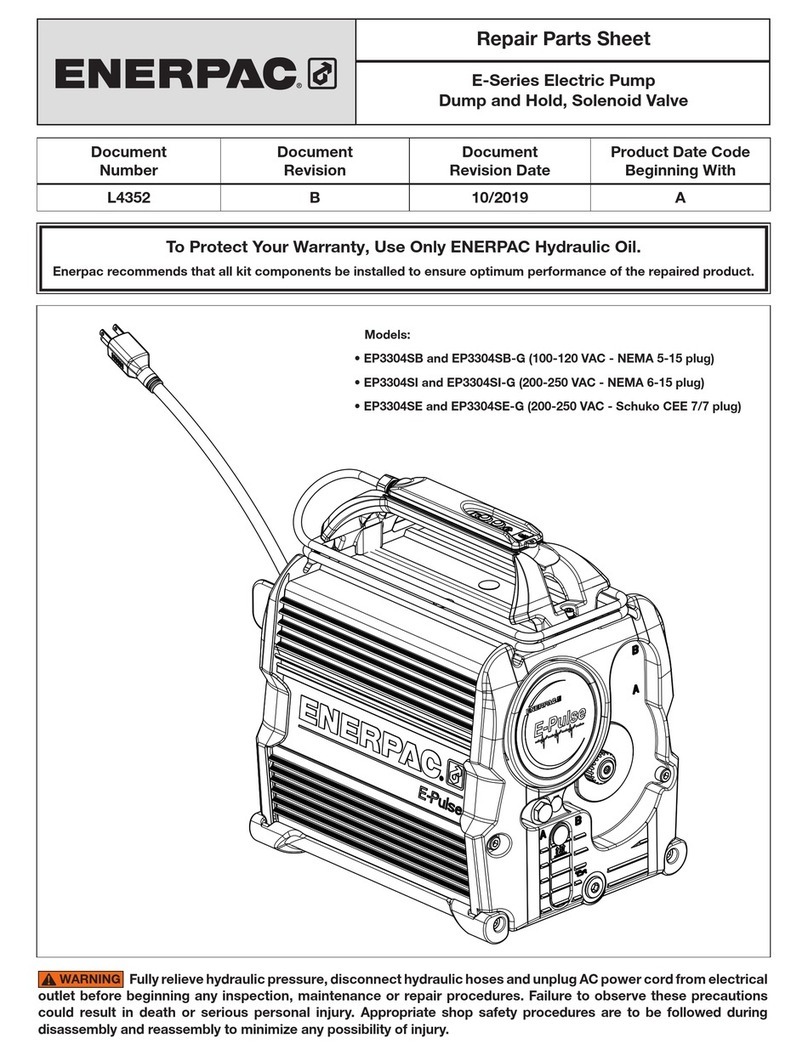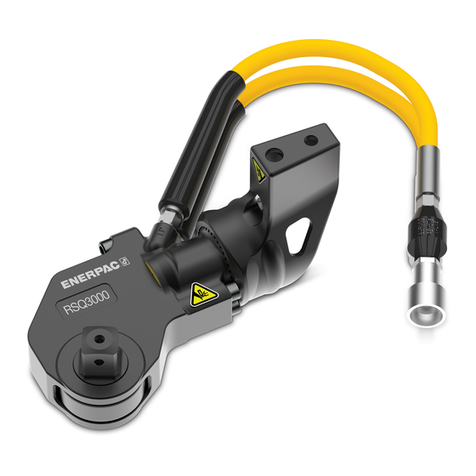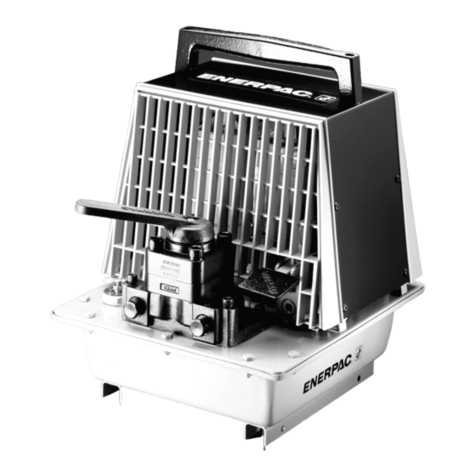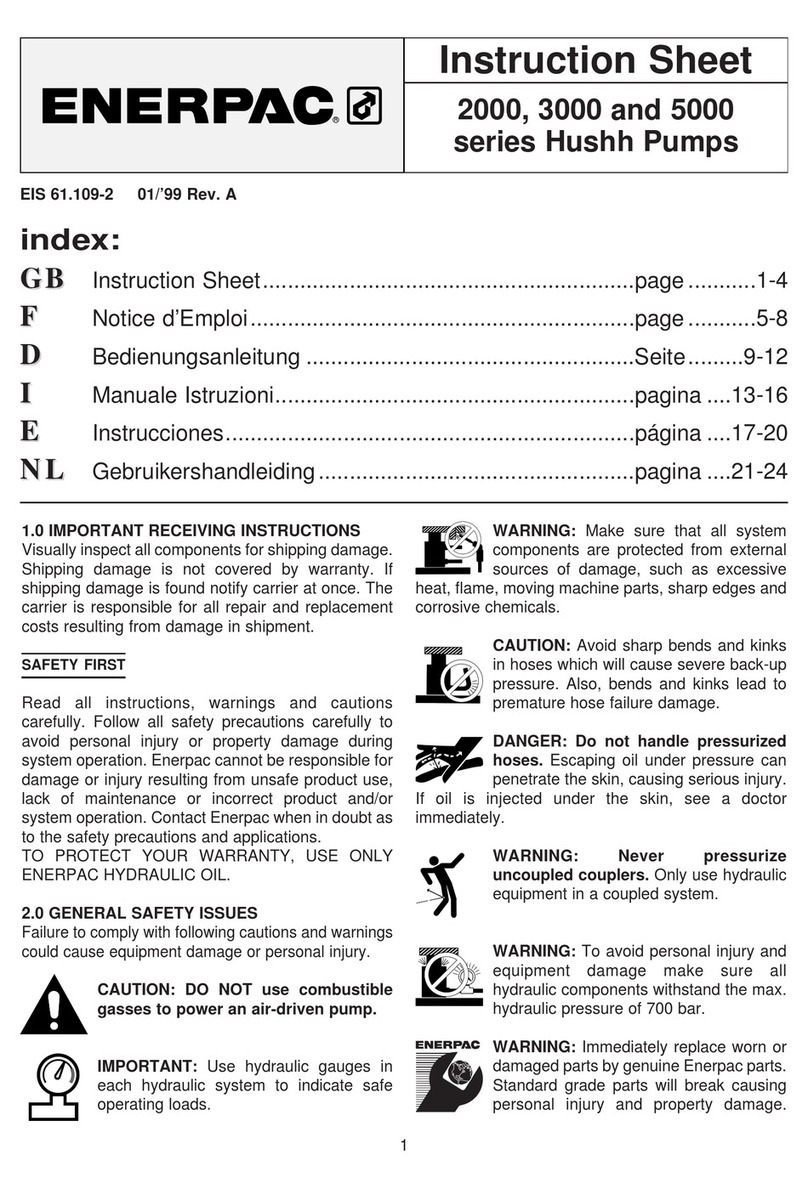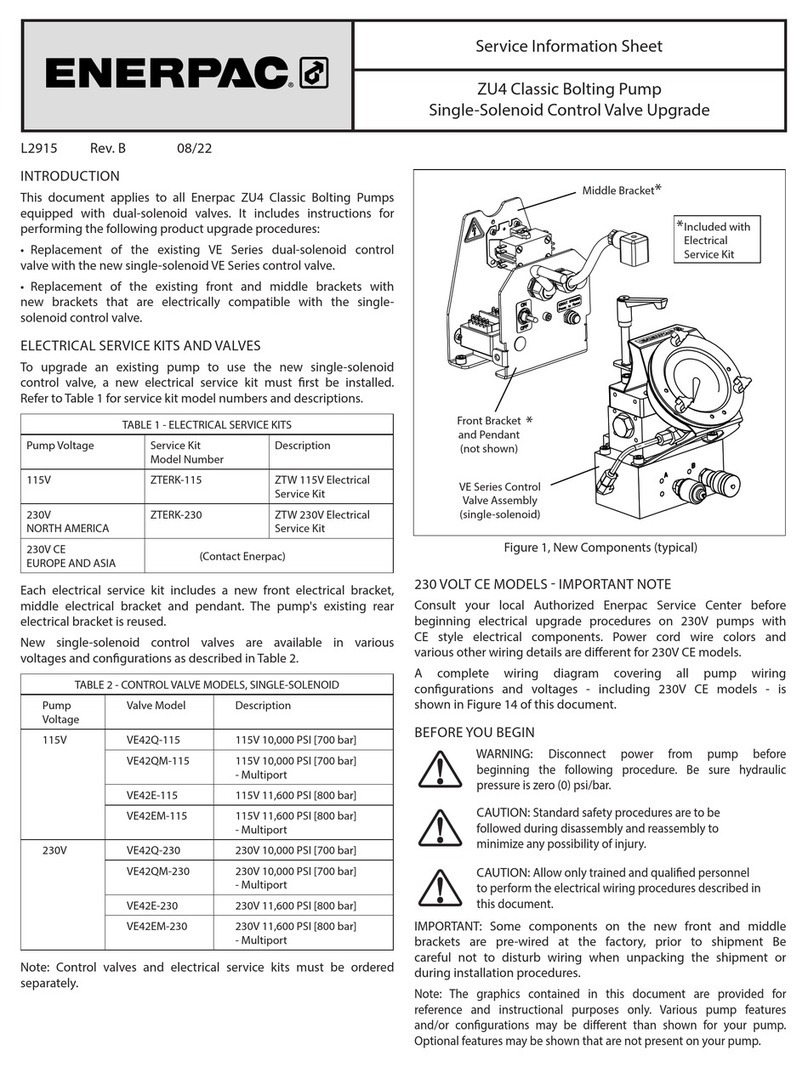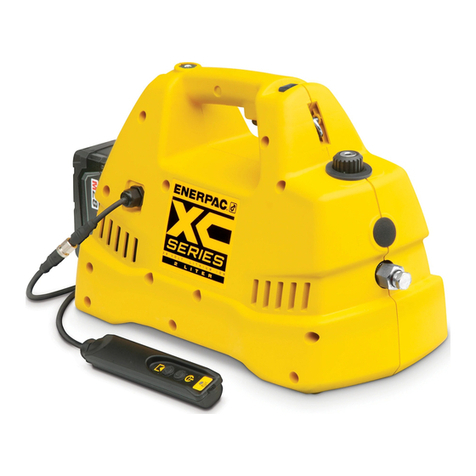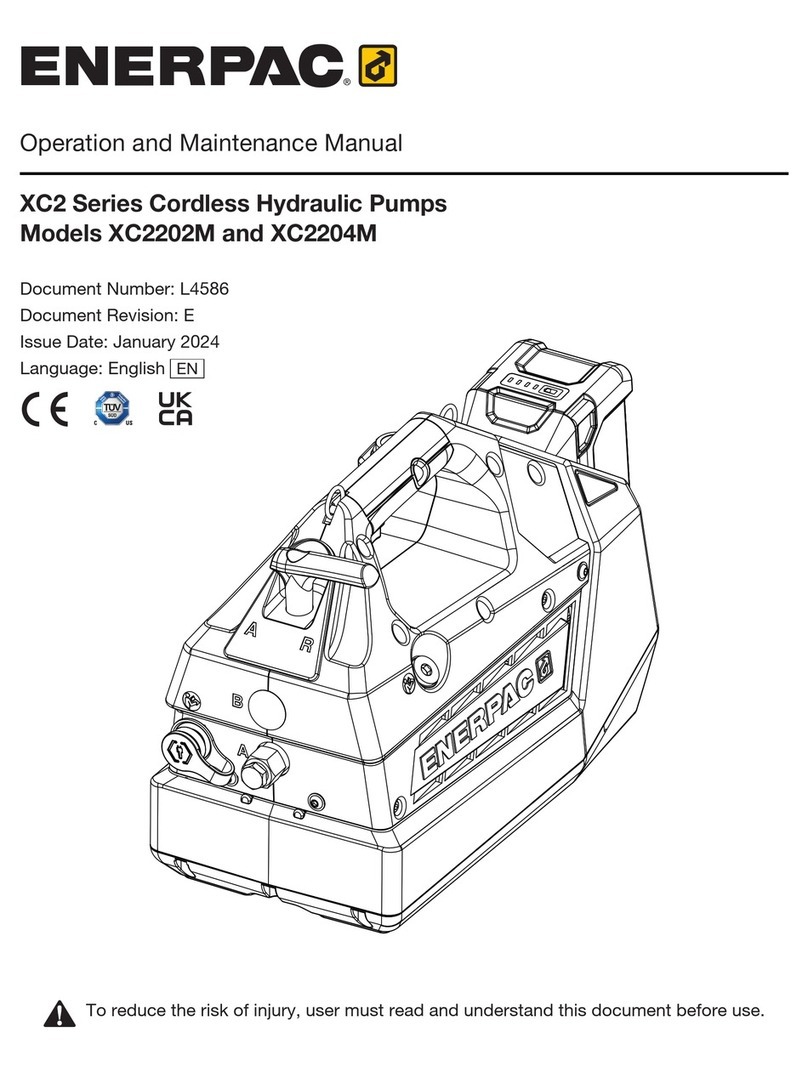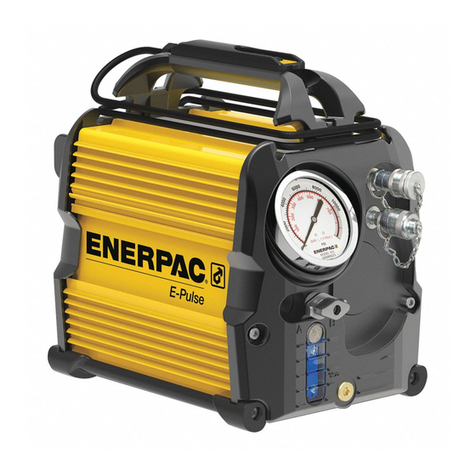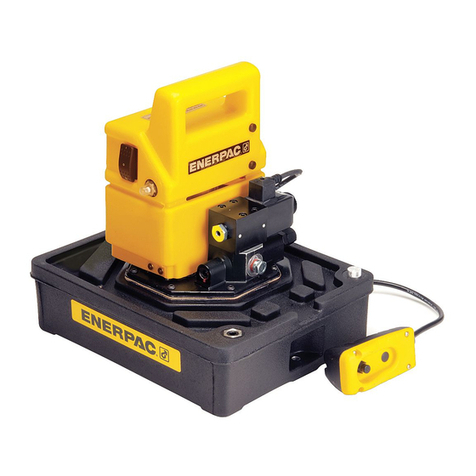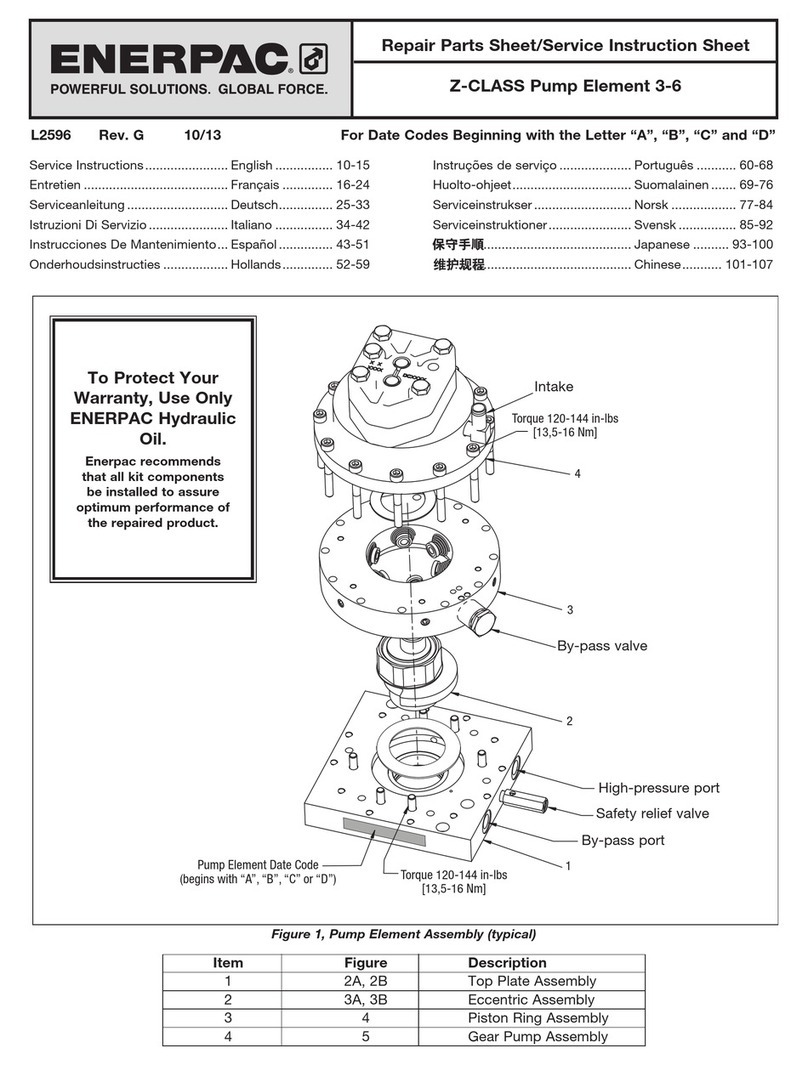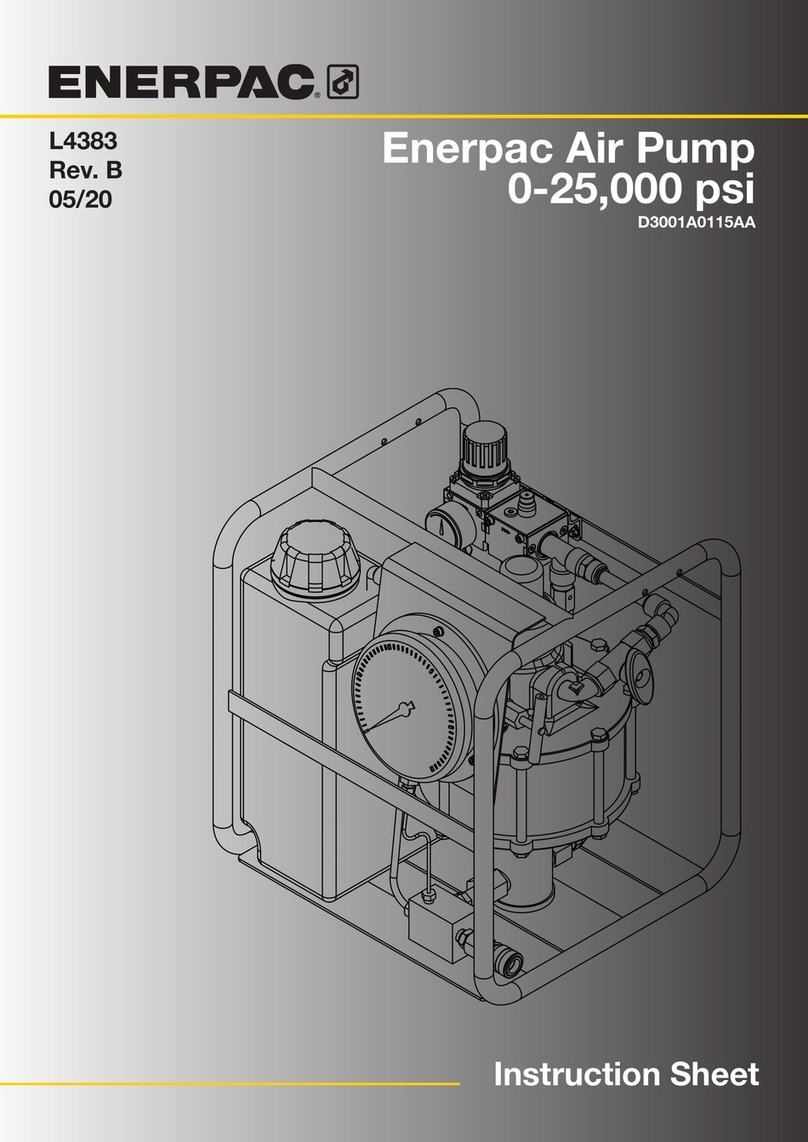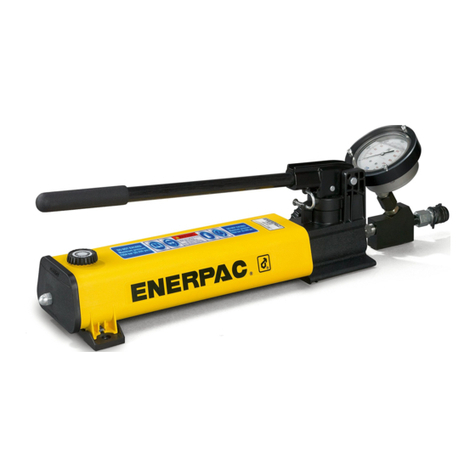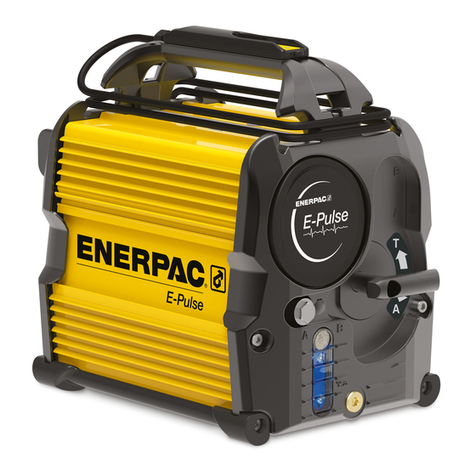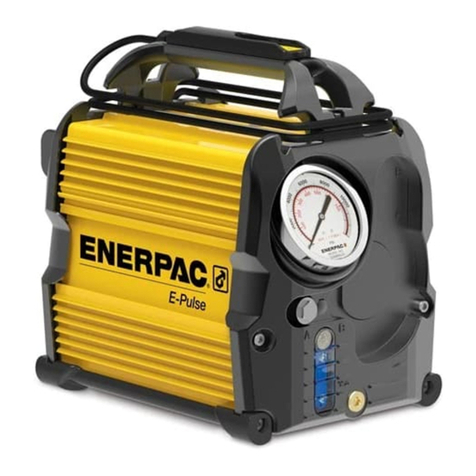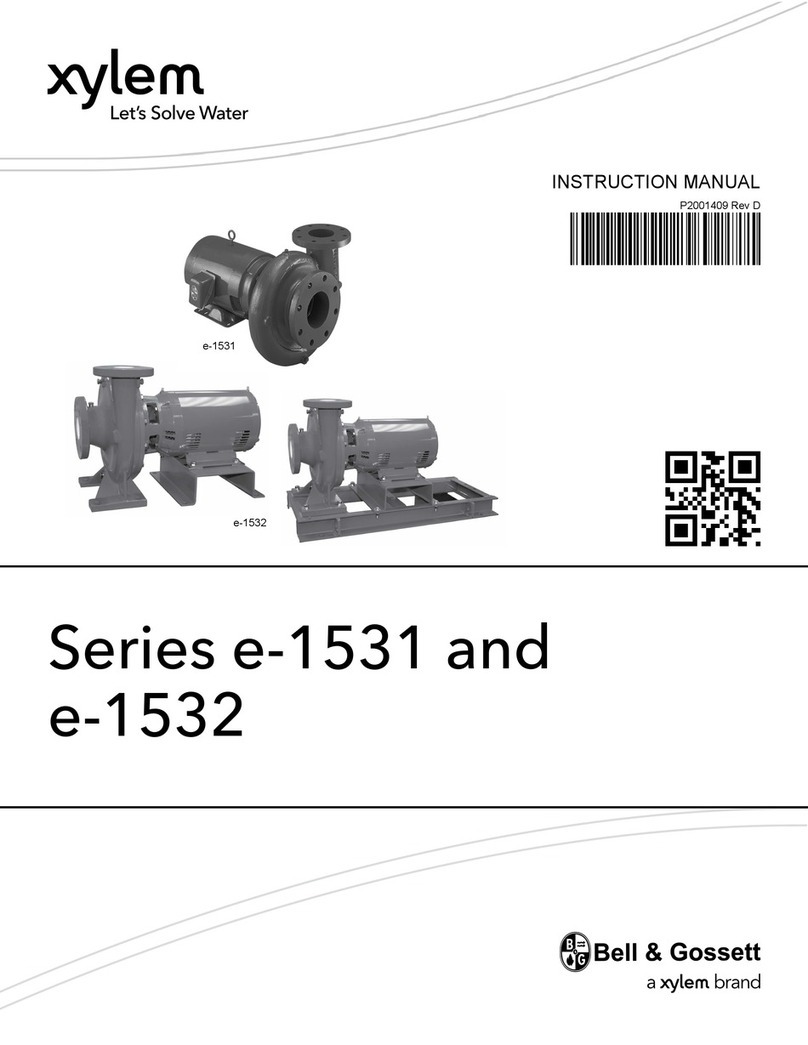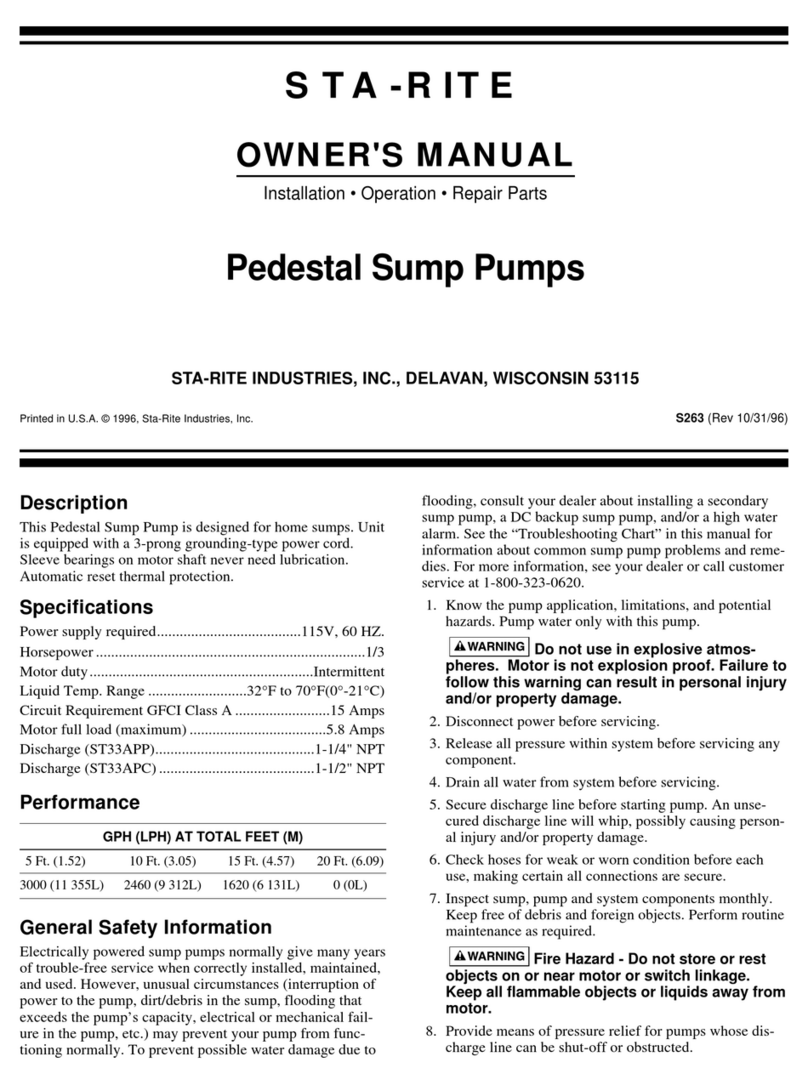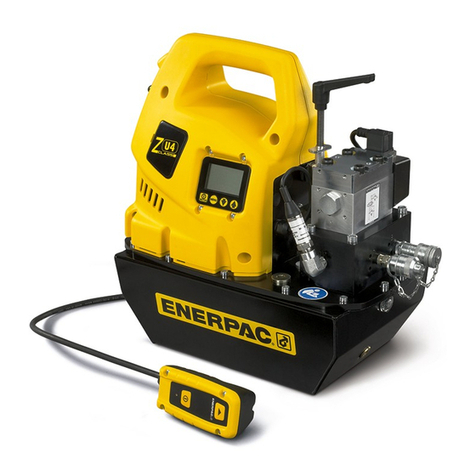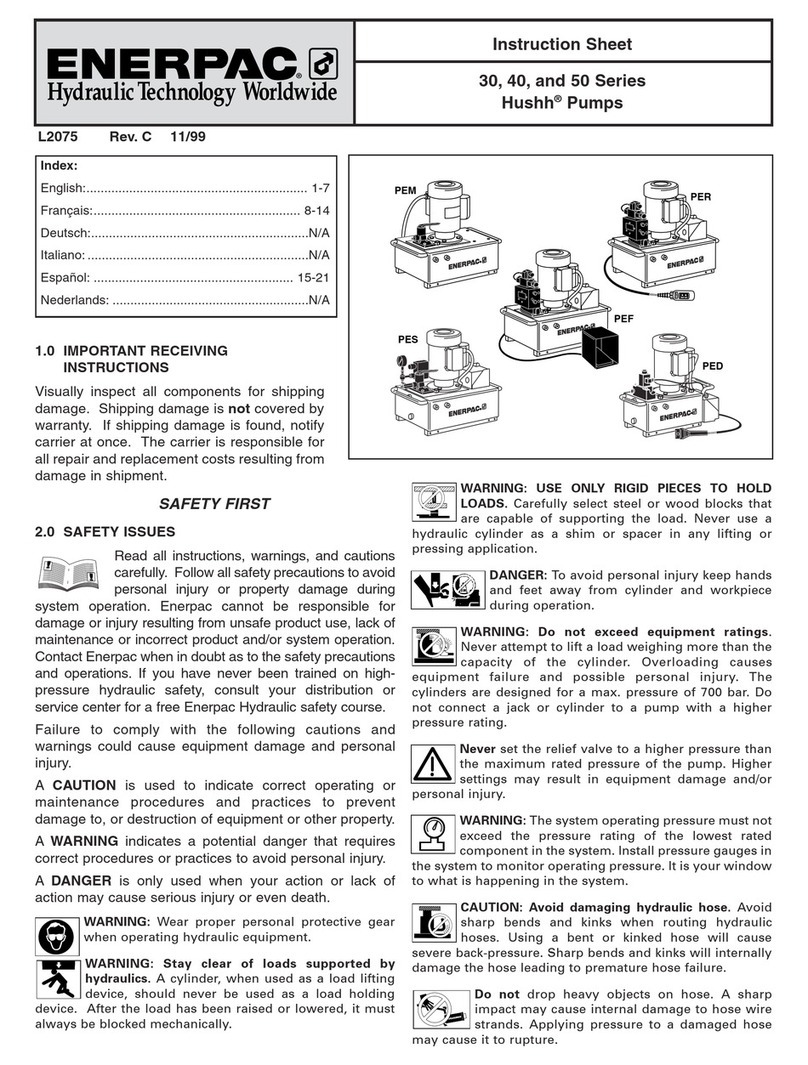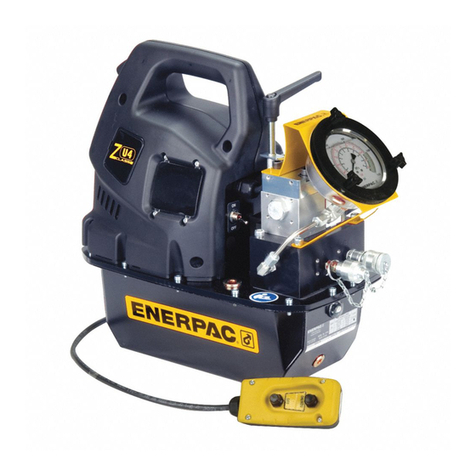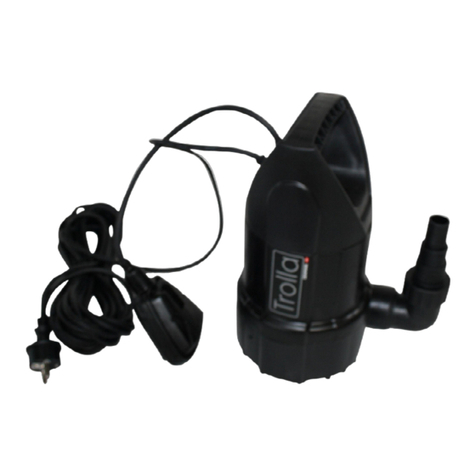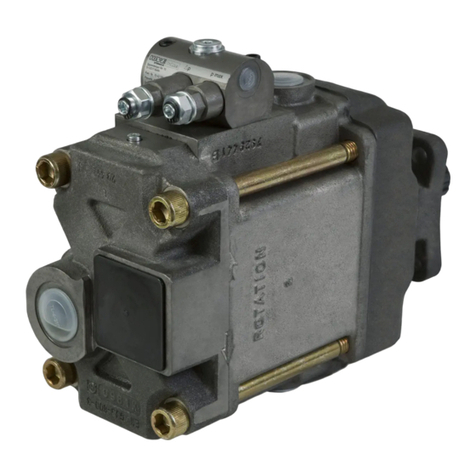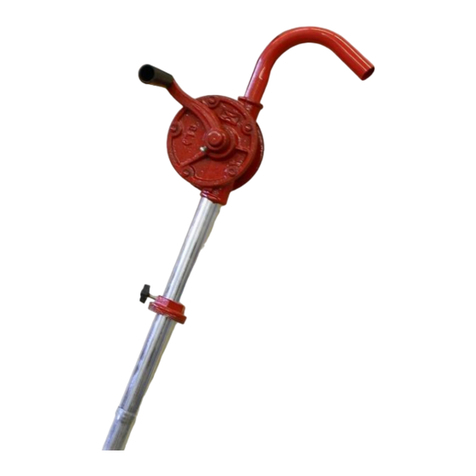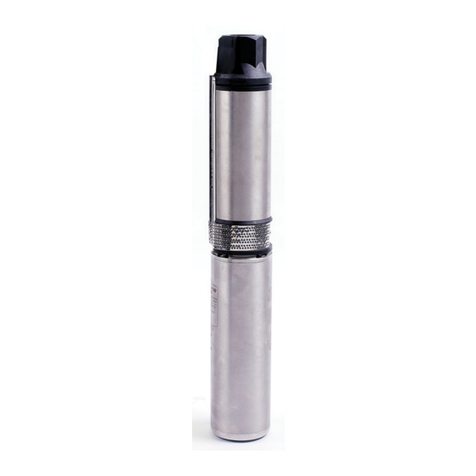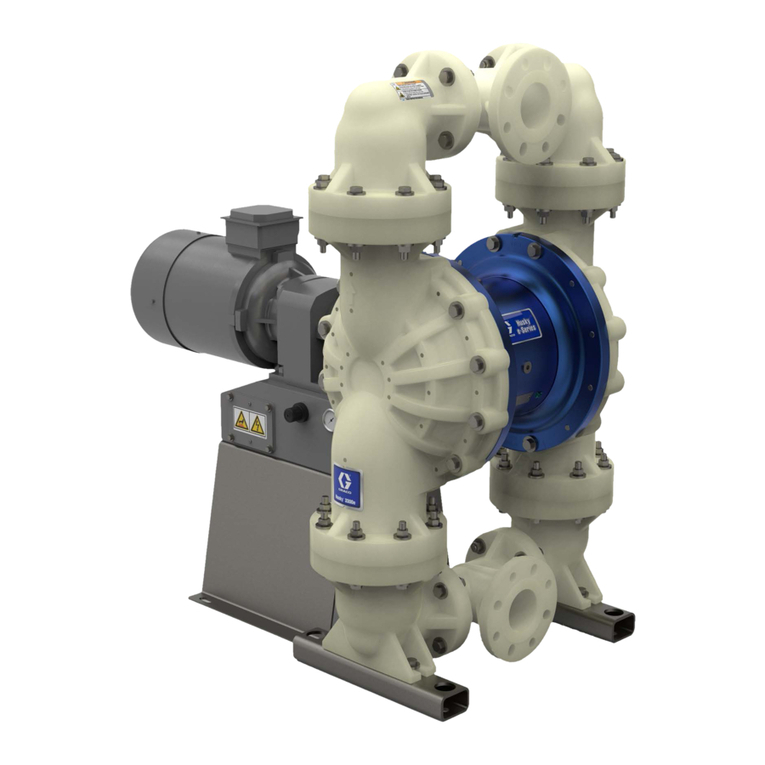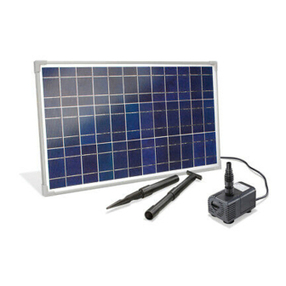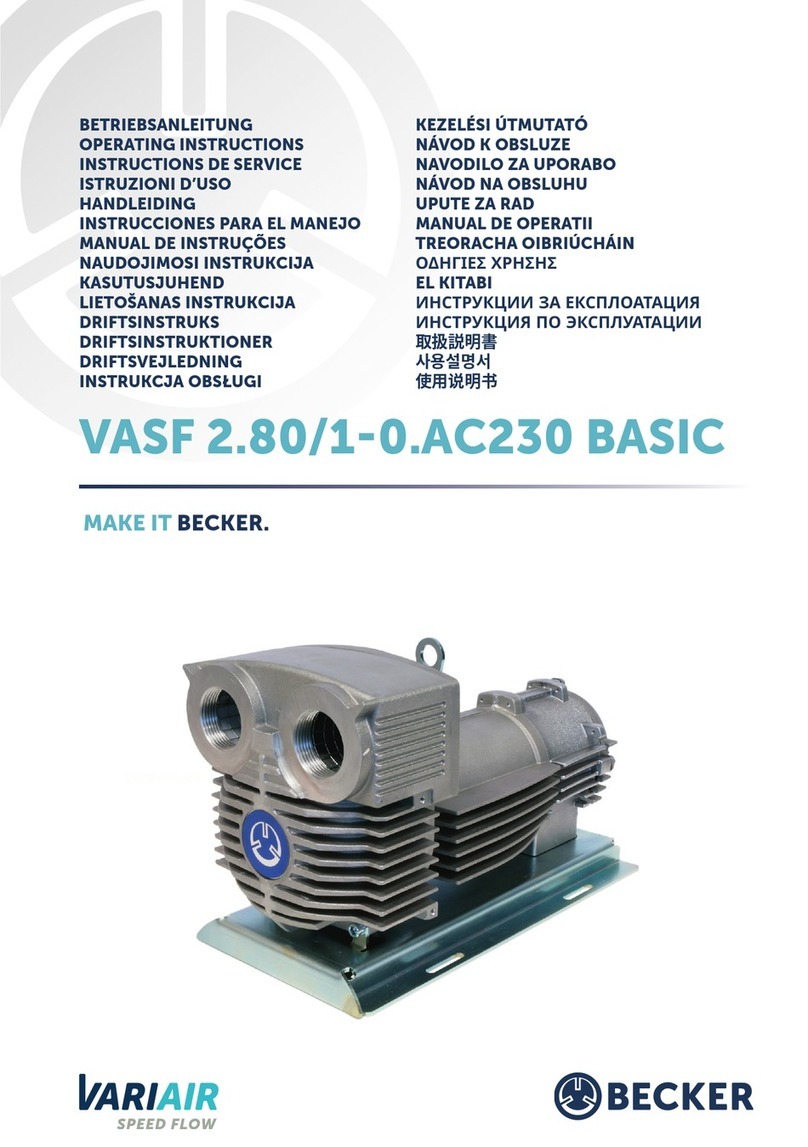
3
NOTES:
• During adaptor installation, extend the plunger
and apply approximately 1500 to 2000 psi
[103 to 138 bar] of hydraulic pressure. This will
help keep the plunger from turning inside the
cylinder base.
• Do not allow the plunger to rotate during
adaptor installation. Plunger rotation may
damage the internal seals and/or the plunger
return spring (if equipped).
• Hand-tighten adapters and attachments until
full thread engagement occurs and the item
can no longer be turned by hand. Do not use
tools.
• Always check for full thread engagement.
Thread damage may occur if cylinder is
loaded and threads are not fully engaged.
• Note that the plunger threads on single-acting
cylinders are not rated for the full cylinder
load.Forces must betransferreddirectly from
theadapteror attachment to the face of the
plunger, and not through the threads.For this
reason, it is very important to verify that the
adapter or attachment is fully installed on the
plunger.
• Use care when installing adaptors and
attachments. Be careful not to nick or mar the
plunger rod surface.
• Collar threads are rated for the full capacity of
the cylinder when fully engaged in attachments.
WARNING: Some cylinder attachments
require that the cylinder be used at no
more than 50% of its rated capacity. Refer
to the accessory instruction sheet for
additional information.
4.0 OPERATION
Operate the hydraulic pump to advance and retract
the cylinder. Some single-acting cylinders are spring-
return, others are load-return. The speed of retraction
is aected by the length of the hose and other
restrictions in the line. Double-acting cylinders are
powered in both directions by the pump.
The cylinder stop ring is designed to take the full load.
However, to reduce cylinder wear, use less than full
stroke and pressure when possible.
5.0 RELIEVING TRAPPED PRESSURE
Pressure can sometimes become trapped in a
hydraulic cylinder if a hose is disconnected before
pressure is completely relieved.
If a trapped pressure condition occurs, always use the
Enerpac model CT-604 coupler bleed tool (available
from your Authorized Enerpac Distributor) to safely
relieve the remaining pressure.
DANGER: Never attempt to relieve hydraulic
pressure by loosening a coupler. Trapped
hydraulic pressure can cause a loosened
coupler to dislodge unexpectedly with great force.
Serious personal injury or death will result if the
coupler becomes a projectile and strikes persons
working in the area.
WARNING: Loosening a coupler may
result in an escape of high pressure oil
that can penetrate the skin. Serious
personal injury or death could result.
WARNING: Never use a hammer and
punch (or other similar method) to unseat
a coupler check ball that is under
pressure. Serious personal injury or death
could result due to the sudden and uncontrolled
escape of high pressure oil.
6.0 MAINTENANCE
1. Use only Enerpac oil with the cylinder. The use of
any other oil may invalidate your warranty.
2. Use dust cap(s) when cylinder is disconnected
from the hose(s). Keep the entire cylinder clean to
prolong its life.
3. Store cylinders upright to prevent seal distortion.
4. Single-acting cylinders only: Before long term
storage, fully extend and retract the plunger once.
Then, store the cylinder upside-down. This will
help protect the cylinder from corrosion and seal
distortion.
7.0 TROUBLESHOOTING
Refer to the troubleshooting chart for a list of
typical cylinder problems and possible causes. The
troubleshooting chart is not all-inclusive, and should
be considered only as an aid to help diagnose the
most common problems.
The cylinder should be repaired only by trained and
experienced hydraulic technicians.
WARNING: Single-acting cylinders are
spring-loaded and require special
disassembly techniques to prevent
personal injury.
